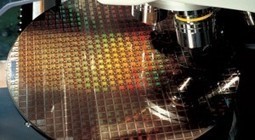Intel’s endless 10nm nightmare has cost it so, so much.
It all started on September 5, 2014. That’s the day Intel introduced 5th-gen Core M chips based on “Broadwell,” the company’s first processors built using the 14-nanometer manufacturing process. Despite some manufacturing woes that pushed Broadwell back from its expected 2013 release, Intel’s offering served as the vanguard of processor technology. AMD remained stuck on the 28nm process with its abysmal Bulldozer architecture. A mere month later, the Apple iPad Air 2 launched with a custom A8X chip that couldn’t quite hang with Intel’s older Haswell CPUs in Geekbench—but it was getting close.
Nearly six years later, the tables have turned. Intel’s 10th-gen Core processors remain on an (upgraded) 14nm process. AMD’s Ryzen chips have snatched the computing crown, and Apple’s doing the unthinkable: switching Macs away from x86 CPUs onto its own custom Arm silicon. And if Apple's flight from Nvidia GPUs after “Bumpgate” in 2009 is any indication, it won’t be coming back.
How did Intel get here? Let's look at how the company lost its way, starting with the death of tick-tock.
[ Further reading: The best CPUs for gaming ]
The long road to 10nm
It wasn’t supposed to be like this. Intel’s original roadmaps expected 10nm chips to launch in 2016, with more advanced 7nm chips coming in 2018. Then the delays began.
The death of Intel’s vaunted “tick-tock” manufacturing process served as the canary in the coal mine. For years, Intel’s processors followed the tick-tock cadence, releasing upgraded CPUs with a smaller manufacturing process one generation, then a new microarchitecture built on the smaller process the following year. Tick-tock; tick-tock. The relentless innovation must have sounded like the doomsday clock to then-floundering AMD.

|
Scooped by Richard Platt |
No comment yet.
Sign up to comment



 Your new post is loading...
Your new post is loading...









Intel’s endless 10nm nightmare has cost it so, so much. It all started on September 5, 2014. That’s the day Intel introduced 5th-gen Core M chips based on “Broadwell,” the company’s first processors built using the 14-nanometer manufacturing process. Despite some manufacturing woes that pushed Broadwell back from its expected 2013 release, Intel’s offering served as the vanguard of processor technology. AMD remained stuck on the 28nm process with its abysmal Bulldozer architecture. A mere month later, the Apple iPad Air 2 launched with a custom A8X chip that couldn’t quite hang with Intel’s older Haswell CPUs in Geekbench—but it was getting close. Nearly six years later, the tables have turned. Intel’s 10th-gen Core processors remain on an (upgraded) 14nm process. AMD’s Ryzen chips have snatched the computing crown, and Apple’s doing the unthinkable: switching Macs away from x86 CPUs onto its own custom Arm silicon. And if Apple's flight from Nvidia GPUs after “Bumpgate” in 2009 is any indication, it won’t be coming back. How did Intel get here? Let's look at how the company lost its way, starting with the death of tick-tock.
The long road to 10nm - It wasn’t supposed to be like this. Intel’s original roadmaps expected 10nm chips to launch in 2016, with more advanced 7nm chips coming in 2018. Then the delays began. The death of Intel’s vaunted “tick-tock” manufacturing process served as the canary in the coal mine. For years, Intel’s processors followed the tick-tock cadence, releasing upgraded CPUs with a smaller manufacturing process one generation, then a new microarchitecture built on the smaller process the following year. Tick-tock; tick-tock. The relentless innovation must have sounded like the doomsday clock to then-floundering AMD.